Struggling to Return to Life 2
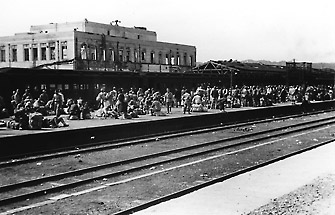
People waiting for a train on the platform of Hiroshima StationMany of the troops stationed in Hiroshima were released from duty from September to October, and the soldiers headed for their home towns. |
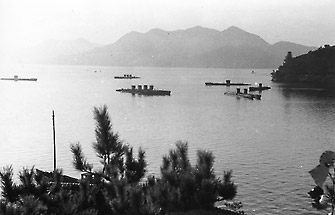
Japanese military submarinesAfter losing the war, Japan was placed under the Occupation of the Allied Forces. Occupation started in the Chugoku Region from September, and Kure became the base for the occupying troops. Japanese military submarines no longer in use were left idle in the area around Ninoshima Island in Hiroshima Bay. |
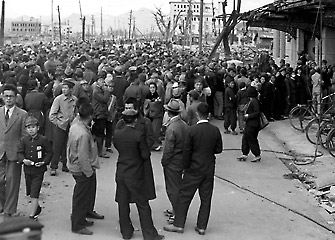
People gathering to watch a filmFilm screenings were held and attracted large numbers of people. |
|
Makurazaki TyphoonOn September 17, 1945, the Makurazaki Typhoon hit Kagoshima Prefecture before moving north through Kyushu and into Honshu. This extremely strong typhoon caused great damage in Hiroshima Prefecture. The heavy rains it brought left most of Hiroshima City under water. Twenty bridges were washed away. In Hiroshima Prefecture alone, 1,229 people lost their lives, with 783 missing. Nationwide, 2,473 people died, with 1,283 missing. Thus, over half of the casualties were in Hiroshima Prefecture. Hiroshima's city functions had already been destroyed by the bombing, and the Hiroshima District Meteorological Observatory, the prefectural government, City Hall, newspapers and radio were not yet fully recovered. Hiroshima's citizens had no idea the typhoon was coming, which left them more vulnerable. Still reeling from the bombing the previous month, Hiroshima was hit hard by the flood. Ono Army Hospital, hit by a mudslideSome injured were taken to hospitals in areas around Hiroshima City. Almost one hundred people were also cared for at the army hospital in Ono Village, Saeki County (now, Ono, Hatsukaichi City), south-west of Hiroshima City. This hospital was hit by a mudslide resulting from Makurazaki Typhoon, and approximately 200 people lost their lives. This number included members of the Kyoto Imperial University A-bomb Disaster Survey Team, which was based at the hospital. |
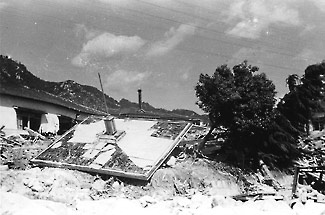 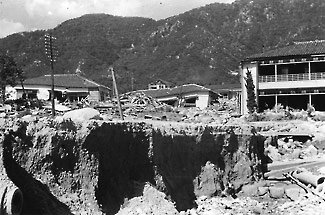 |
